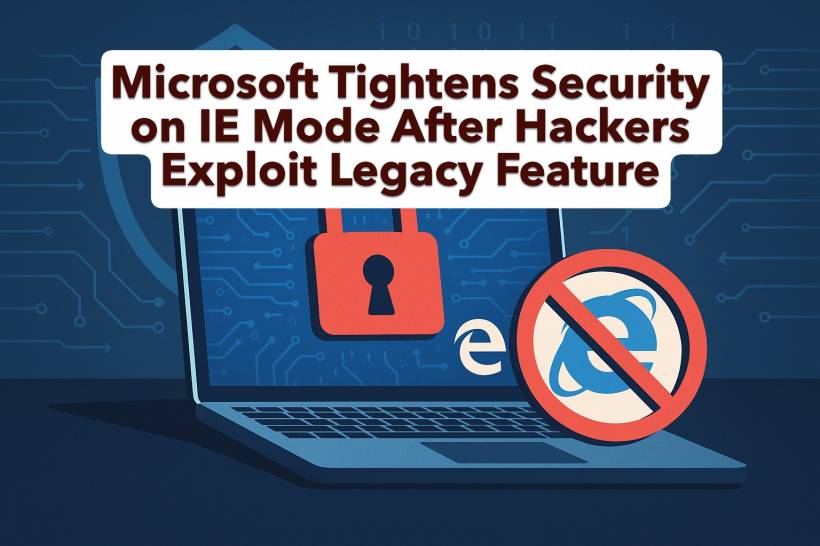Microsoft has officially locked down the Internet Explorer (IE) Mode in its Edge browser, following confirmed reports that hackers had turned the legacy feature into a stealthy backdoor for cyberattacks.
The company said it made the decision after receiving "credible reports" in August 2025 that threat actors were using IE Mode to bypass Edge's modern protections and gain unauthorized access to user devices.
How Hackers Exploited IE Mode
According to Microsoft's Browser Vulnerability Research team, attackers combined social engineering tricks with unpatched zero-day exploits in Internet Explorer's old Chakra JavaScript engine to break into systems.
The attack sequence was deceptively simple: victims were lured to a legitimate-looking website. A cleverly designed flyout message on the page then urged them to reload it using Internet Explorer mode.
Once the user complied, the attackers exploited a vulnerability in the Chakra engine to execute malicious code remotely. From there, they launched a second exploit to escape the browser's sandbox and seize full control of the device — a rare but powerful form of privilege escalation.
Why It's a Big Deal
This attack is particularly alarming because it undermines the security foundation of Microsoft Edge, which is built on Chromium and fortified with modern defense layers. By coercing users into IE Mode — a compatibility layer meant for legacy business apps — hackers effectively downgraded Edge to Internet Explorer's weaker state.
Once in, attackers could deploy malware, perform lateral movement within corporate networks, and even exfiltrate sensitive data.
In essence, the exploit transformed a convenience feature for old web systems into a gateway for modern cybercrime.
Microsoft's Response: Security Over Convenience
While Microsoft did not reveal details about the exact vulnerabilities or the identity of the attackers, the company confirmed it had moved quickly to mitigate the threat.
To prevent future abuse, Microsoft has removed all one-click access points to IE Mode, including:
Now, enabling IE Mode is no longer a casual action — users must manually configure it through Edge's settings.
How to Enable IE Mode Safely
For those who still rely on IE Mode to access older websites or internal systems, Microsoft says the feature remains available — but must be activated intentionally.
Here's how:
These extra steps, Microsoft explains, create a "security buffer" that stops attackers from easily triggering the mode via malicious web content.
A Deliberate Shift Toward Safer Legacy Support
Microsoft acknowledged that the decision might inconvenience some enterprise users, but emphasized that security takes precedence.
"This approach ensures that the decision to load web content using legacy technology is significantly more intentional," the company wrote. "The additional steps required to add a site to a site list are a significant barrier for even the most determined attackers to overcome."
IE Mode, once a bridge for backward compatibility, is now treated as a locked door with a manual key — ensuring only authorized use while keeping modern web users safe from old-era vulnerabilities.





Comments